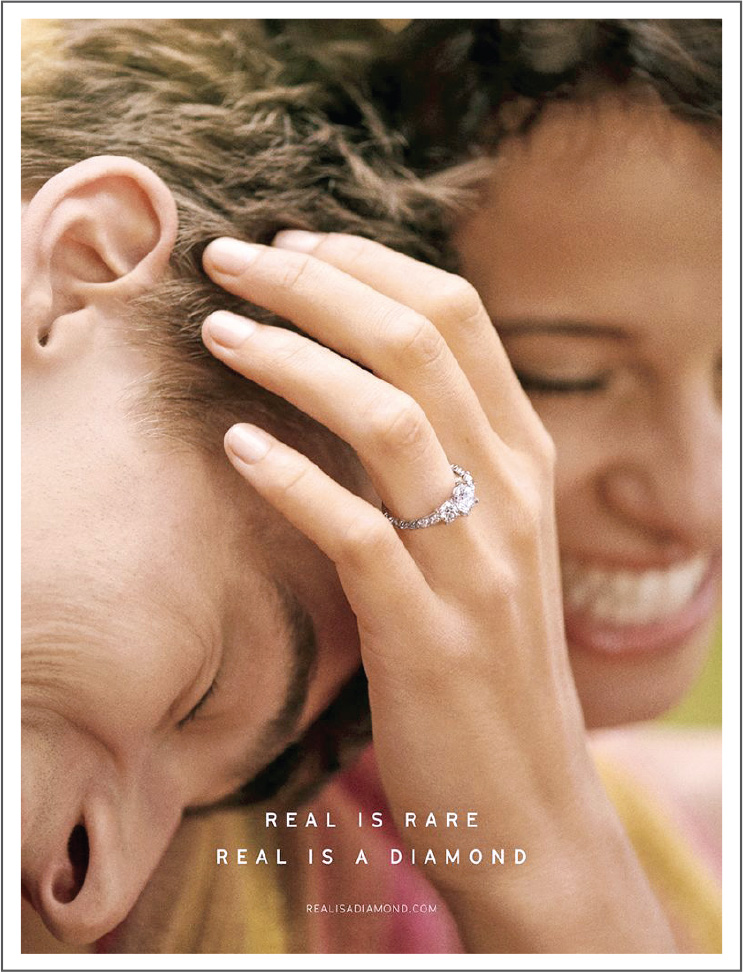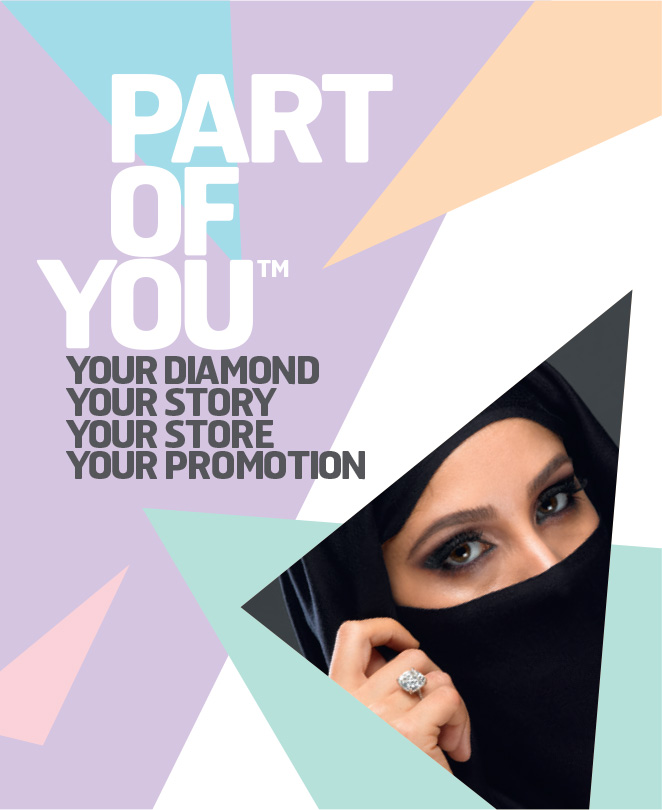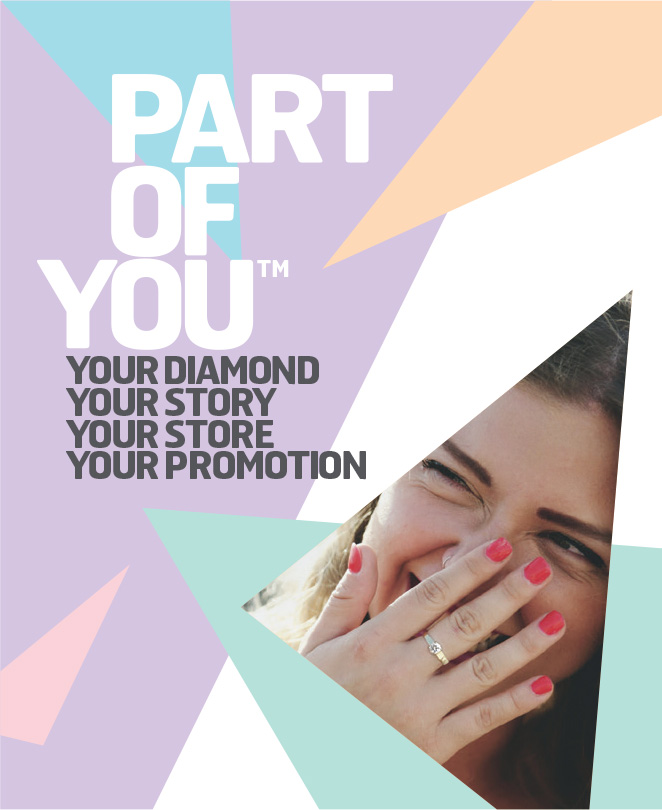Neither the upstream, nor the midstream industry’s efforts in generic diamond promotion seem to have led to tangible, quantifiable and increased sales numbers that these parties and, of course, the retail sector, were hoping for.
Below I’ve made a list of questions to try and summarise where “we” currently are and, if possible, where we need to learn to listen better to the consumers. Ultimately, we need to decide what the best route is to regain consumer trust. Is it by carrying out a barrage of advertising, as the DPA is doing? Or is it more important to support retail jewellers in their efforts to sell diamonds and diamond jewellery, which is the prerogative of the World Diamond Mark Foundation (WDM). Or is there a third route, where consumers are shown, consistently and constantly, that diamonds play an important role in improving the lives of the common people who mine in Africa and elsewhere?
Question: Have the millions of dollars paid by the diamond producers to advertising agencies been effective?
Answer: Doesn’t really look like it, does it?
Question: And what about the efforts of the World Diamond Mark Foundation (WDM), the organisation established by the World Federation of Diamond Bourses (WFDB) to support retailers in their generic diamond promotions?
Answer: They have failed to make an impact, for a number of – mostly politically driven – reasons, but the most important one is the lack of support and funding.
Question: Did the “Real is Rare” and “Part of You” campaigns ‘connect’ with consumers?
Answer: Hmmm, seems the jury is still out on that one.
Question: Was the DPA’s decision to focus on diamonds’ rarity, aimed, among others, at countering synthetics, a prudent choice?
Answer: Most probably not! It seems the diamond business community is not able to look at the long term, does not understand that with its obsessing it creates lots of free publicity for synthetics and shoots itself in the foot by not addressing its most important issues which all revolve around its reputation and credibility.
Question: Is there, possibly, another approach to the promotion of diamonds and diamond jewellery?
Answer: That’s what we are going to try and find out below.
Since the establishment of World Diamond Mark Foundation (WDM) in 2014, the launch of its first programmes and consequently the formation of the Diamond Producers Association (DPA) in 2015, the diamond and jewellery industry and, in particular, retail jewellers have been receiving mixed messages as to how diamonds need to be promoted to the consumer and which is the best approach.
The WDM was founded by the WFDB and up to now effectively has been the midstream industry’s only independent and real effort to take control of the marketing messages of their ‘proprietary’ product: the polished diamond.
The WDM quickly found its voice, announcing it would concentrate on working directly with and for retail jewellers, those parties who work hard to let the diamond jewel cover the longest distance – the last 18 inches of the sales counter – from the retailer over to the end-consumer.
The DPA, on the other hand, and judged by its visible actions, concentrated on the end-consumer, very much as the Diamond Promotion Service (DPS) had done in the past.
The business models of the two organisations are very different.
The WDM’s goal was, and remains, after receiving seed funding, to build its own professional team and to become selfsupporting and self-financing by creating an ecosystem in which the WDM and its retail members would have a reciprocal relationship.
Going forward, the WDM started building its tool box. It created the WDM Authorised Diamond Dealer programme and began running pilot programmes to gauge retailers’ needs and reactions.
Partnering with the Turkish Jewellery Exporters Association, known by its acronym JTR, the World Diamond Magazine was founded, soon to become one of the prominent hard copy magazines serving the retail sector.
Further on, the WDM creative team formulated the “Part of You” campaign, a programme based on storytelling that would help retailers not only tell the diamond story to consumers, but also to motivate consumers to weave their own diamond’s story, and as such, to make the purchase of diamonds and diamond jewellery “Part of You”.
It was, and is, all ready to go, but the lack of funding has brought the work of the WDM to a halt
The DPA, consisting of seven members, all diamond producers, chose to market its work – coordinated by a CEO with a small team – and to make considerable funds, reportedly millions of dollars, available to creative agencies to produce consumer messaging.
In a video explaining the DPA’s videos for the holiday season of 2017, Paul Malmstorm, a manager at the DPA’s creative agency, Mother New York, explained that the videos would continue, as in its first year in 2016, to revolve around the small moments of love between partners.
How effective are these clips? My longtime colleague Rob Bates is undisputedly the diamond jewellery industry’s leading diamond editor. His full-time job at JCK – there are not many fully employed editors left in jewellery journalism – affords him the ‘luxury’ of following the diamond industry closely and reporting on it. Many in the industry will read Rob only to stay up to date with the truly important developments.

WDM’s ‘Part of You’ promotion ads.
With the compliments out of the way, let’s look at a recurring survey of the jewellery commercials Rob does at the year end. During the past eight years, Rob has been critiquing jewellery advertising, and towards the end of December 2017, he looked at videos, among others, in particular those commercials produced ahead of the 2017 holiday sales season. This is the link (https://www.jckonline. com/editorial-article/jck-2017-holidayjewelry-advertising-roundup) to the article and since you will be reading this article many weeks after the holidays, it will allow readers to contemplate their effectiveness.
Scrolling towards the end of the article, I was surprised mostly by the low ranking of the video produced by the Diamond Producers Association (DPA). Out of a list of nine, the first, sixth and eighth videos were produced by commercial jewellery companies and chains. Forevermark ranked ninth and the DPA seventh. Here is what Rob wrote and reported about the DPA clip called The Other Party
Consumers’ comments:
– “I loved the coyness of the characters here. It’s understated and feels more genuine… I also liked the opportunities to see the ring itself multiple times as it moved with the woman’s hand. Great display of the piece.
– “Honestly, it just looks like really forced product placement.”
– “Not sure what this is for.”
My comments: Last year’s Diamond Producers Association “Real is Rare” commercials attracted notice by boldly breaking (https://www.jckonline.com/ editorial-article/how-real-is-rare-hopesto-reinvent-diamond-advertising) the standard template for diamond ads. This year’s batch assiduously adheres to it. The difference is these ads target older millennials. That dinner-party-attending couple is a little too old to run off to Thailand with a snake.
This is a nice ad—with another male vocal—but the similar Blue Nile spot worked better for me.
Something to ponder: Just who is this other party?
Again, take a moment to go to Rob’s article online and give it a read. Rob’s stuff is always good.
Seven out of the nine commercials surveyed were made by jewellery chains and companies. Surely, they did not invest millions in their productions? No doubt, they spent good money, and got good results, as judged by Rob Bates. More importantly, it seems the jewellers know their targets as well, if not, better than the agency.
My bold conclusion would be: why not get the retailers on board in this project and create a number of generic ads that can be shared.
But wait! Been there, done that. That is, more or less, what the DPS used to do!
What stories about diamonds really connect to consumers, then? Or, what stories have the most potential to raise the consumers’ interest about diamonds?
Let’s pick one. An item of interest that got significant media attention was Laurence Graff buying the ‘Peace Diamond’ from Sierra Leone. Auctioned by Rapaport, a good part of the sale’s proceeds was marked to bring about positive change in the villages in the diamond fields where the diamond was found. The auction was the culmination of a saga that showed how a local pastor in one of Sierra Leone’s diamond fields took a large diamond, found by diggers, to the authorities, instead of smuggling it out of the country. He secured a promise that the proceeds would, at least in part, come back to the local community. Consumers love these stories, about the people on the ground, and how diamonds can change their lives for the better.
The DPA also picked up on this, as evidenced by a story it placed in the New York Times. The story’s writers accompanied ordinary workers during their daily routines in a diamond mine in the inhospitable climate of the mine’s location, close to the Arctic Circle in Canada. It’s a fantastic piece, with fantastic photography. But it was paid-for (wondering what the cost of creating and placing that was), and not ‘organic,’ making it an advertorial. Yes, it matters, consumers are not stupid. But with its content, this article is a step in the right direction.
Unfortunately, organic news stories are the exception to the rule. The Diamond Empowerment Fund creates good stories about how diamonds contribute to local mining communities, and we need more of those. They need better funding and more support from the industry. “Diamonds Do Good” is a much better slogan than “Real is Rare.”
At the same time, the recent news coming out the last KP meetings, with the NGO Impact (formerly Partnership Africa Canada) stepping away from the KP saying that “Consumers are being sold something that is not real.” To say that is not great advertising for the diamond sector is an understatement and grist to the mill of the synthetics producers. Countering that with “Diamonds Do Good” would be much more effective than “Real is Rare.”
Now that we have mentioned the “S” word, let me ask: are synthetic diamonds a threat?
Only to those who have no clue.
For our colleagues in the coloured gemstone industry, synthetic stones – emerald, sapphire, ruby, spinel and many other gemstone varieties – are a fact of life, as these have been around for more than a century
What has this meant for them? Savvy gem dealers, from rough buyers to polished traders all are well educated and equipped, both in terms of knowledge as well as instrumentation, to avoid any pitfalls.
What has happened to the prices of natural coloured gemstones since synthetics came into play?
They have gone up. As simple as that.
Of course, as the diamond industry is currently experiencing, synthetics can be a nuisance, but they play no competing role.
Also, to retailers, synthetic diamonds may look like a nice marketing opportunity. Marketed at lower prices, presented as ‘green,’ ‘responsible’ and ‘conflict-free,’ since they are made in a factory and not mined, some consumers may opt for synthetics.
Newsflash: synthetic diamonds have no resale value whatsoever. Do retailers – and consumers – realise this?
Will synthetics disappear? Absolutely not! They will probably secure a singledigit percentage market share in the long run.
Why?
Again, history will repeat itself. With increasing supply and declining prices – the rule of economics – wholesale and retail prices of synthetics will continue to go down.
The diamond industry needs to take a page out of the coloured gemstone’s history and learn from it. Stop talking about synthetics, and start telling good stories about diamonds. The synthetic ‘craze’ will pass, the market for products will balance out, and prices will go down to a level of significant and telling differentiation. As indicated above, the panic in the midstream market is the result of historical ignorance and the inability to do some long-term thinking.
Not all the questions I asked above were answered. Some of the opinions and ideas presented may be provoking. If you agree, then I have done my job.






